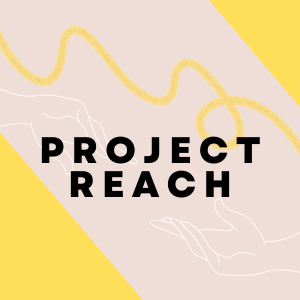
GRIT
The GRIT Project (Growing Rural Independence Together) is our flagship grassroots economic recovery initiative, now spanning 32 counties in Appalachia Ohio. Originally launched in a single county, the project has rapidly expanded, achieving significant impact. Over the past five years, more than 16,000 individuals have been assessed, coached; and, created a career plan; 87% of participating high schools have implemented or expanded their career education programs, 68% of high risk seniors without a post-graduation plan and with an average ACE Score of 5+ have completed credentials and gone on to post-secondary education or a job. GRIT has led to a 14% higher adult job placement rate for underemployed/never employed individuals and a 25% higher displaced worker placement rate compared to the rest of Ohio.

College/University Collaborations
College students often begin their freshman year unsure about choosing a major and what they hope to do after earning a degree. By partnering with Future Plans, universities and colleges such as Lourdes University, Ursuline College, University of Cincinnati-Clermont, and Shawnee State University provide students the opportunity to explore their natural strengths and, with the support of a career coach, map their skills and talents to training that will best fulfill their transition into the world of work.
Additionally, Future Plans consults on the development of workforce training programs that align with the needs of the local employment community while also fulfilling the demand of student interests. As an example, Shawnee State University established a new residential summer camp program to provide high school juniors and seniors without a plan the opportunity to earn short-term credentials in high-demand fields and to then be supported into internships and/or jobs.

Urban Schools
In 2024, Future Plans extended its impact to urban communities in Ohio, applying lessons learned from Appalachia Ohio. These initiatives include four key projects:
Cleveland Heights/University Heights: Develop a wrap-around support model for at-risk youth to help them complete school and gain job-readiness through earned credentials and work experience.
Shaker Heights School System: Prioritize at-risk youth, particularly African American males, by guiding them through personal discovery and creating individualized plans for reengagement with school.
East Cleveland: Partner with the Superintendent of Schools on a Phase I community revitalization project centered on Shaw High School, aiming to shift the community’s perception from “failing” to “achieving.”
High Tech Academy (HTA): Collaborate with CMSD and Tri-C to align students with in-demand STEM opportunities, supporting their graduation with industry credentials that lead to post-high school jobs.

Project REACH
The REACH Project (Recovery to Employment via Assessment and Coaching, Holistically) focuses on capacity building for Substance Use Disorder (SUD) providers and corrections facilities, supporting recovery and rehabilitation for re-entry communities. Funded by the Appalachian Regional Commission and the Ohio Attorney General’s Office, the project integrates workforce development best practices, strengthens provider capacity, promotes sustainable recovery, and expands the number of certified peer support specialist across Appalachia. . The outcome is the successful transition of re- entry populations into contributing members of the community.

MoveUp
Inspired by the success of the GRIT Project, Move Up Ohio is committed to advancing economic prosperity in the diverse communities of Ohio’s Western Great Lakes Region. This initiative builds on proven strategies to support the economic uplift of both urban and rural areas by forming strategic partnerships with youth- focused organizations and educational institutions. By focusing on creating accessible pathways to living- wage STEM jobs, Move Up Ohio not only equips young people with the skills and opportunities needed for sustainable careers but also instills a renewed sense of pride and purpose within these communities. This holistic approach ensures that economic growth is inclusive, empowering individuals and fostering a culture of resilience and achievement that benefits the entire region.

Remote Workforce Development Project
Future Plans leads a capacity-building effort across the GRIT counties in Appalachian Ohio and like socioeconomic rural counties to increase knowledge and understanding of the concept of remote work and the diverse opportunities available, offer foundational skills training required to be successful in remote and hybrid work such as basic computer word processing, spreadsheet, presentation software, virtual meetings, promote opportunities for job-specific skills training required for remote and hybrid work such as project management, research, information technology and other in-demand positions, and support operations and marketing efforts and facilitate capacity building of shared work centers.

Dragonfly Village (Formerly Chatfield College)
In response to growing community needs, Future Plans acquired the historic 99-acre property of the former Chatfield College, with plans to transform it into a comprehensive wellness and recovery center. This facility, named “The Sanctuary,” will be supported in part through the WISER (Women Working in Social Enterprise Recovery) initiative that will engage participants in workforce development through a number of social enterprises. The Sanctuary will serve as a vital resource for transitional housing and holistic family care, with a particular focus on supporting women and children. The Sanctuary aims to create a nurturing environment where individuals can rebuild their lives through recovery and empowerment. Set to open in January 2025, this center will become a cornerstone of the community, providing essential services that address both immediate recovery needs and long-term well-being, helping families to regain stability and thrive.

Appalachian STEM Collaborative
The Appalachian STEM Collaborative was formed to inspire hope and foster educational excellence among all students in the Appalachian region of Ohio by ensuring equitable access to high-quality STEM and STEAM learning pathways. By cultivating academic environments that challenge students to enhance their problem-solving, critical thinking, and resilience skills through authentic, real-world experiences, the organization aims to prepare them for future success. We are committed to investing in and empowering educators, providing them with the support needed to drive innovation and effective teaching practices. By embracing the region’s heritage of innovation and creativity, we seek to transform resource limitations into opportunities for collaborative growth and to optimize STEM and STEAM education for the benefit of the community.
